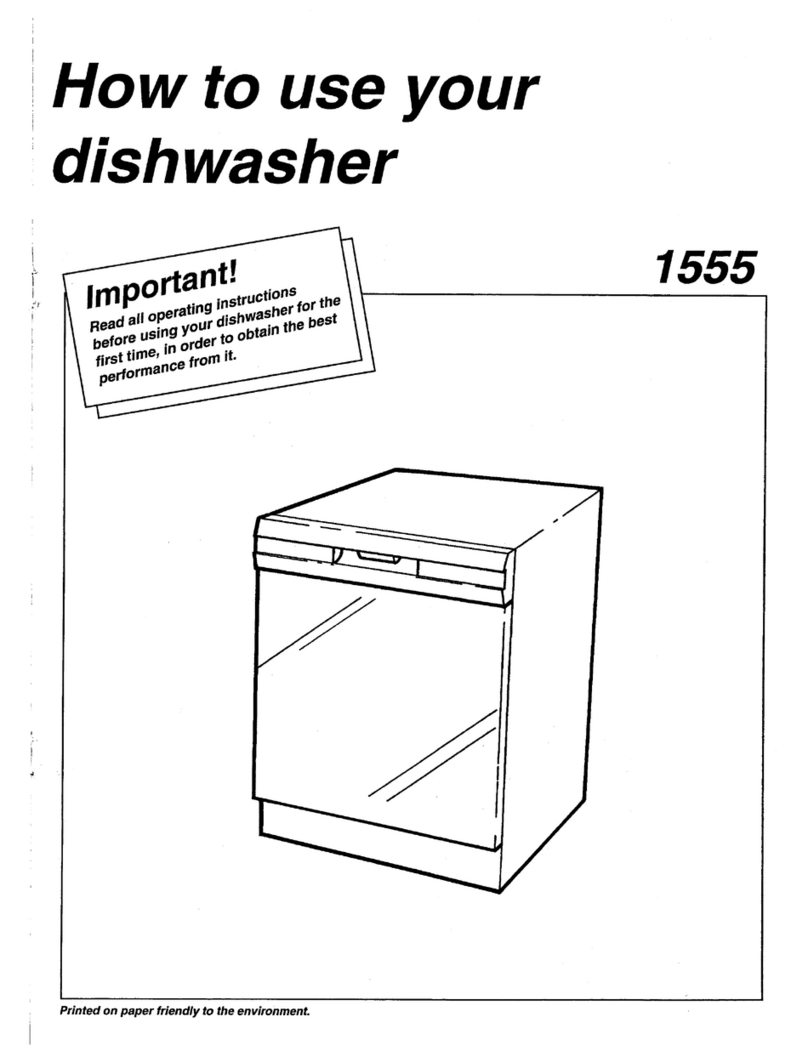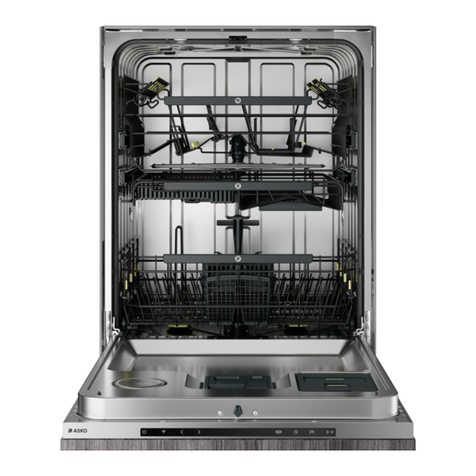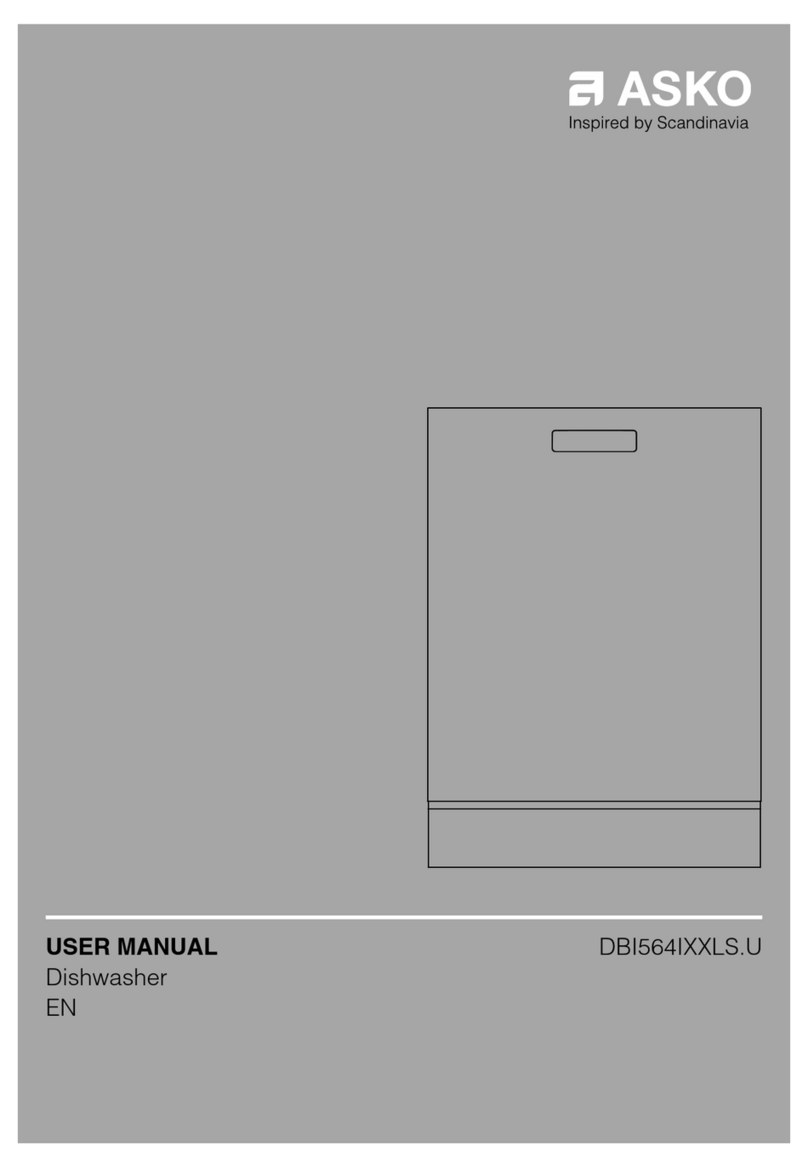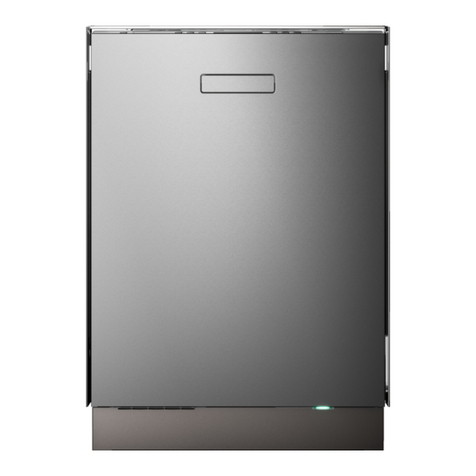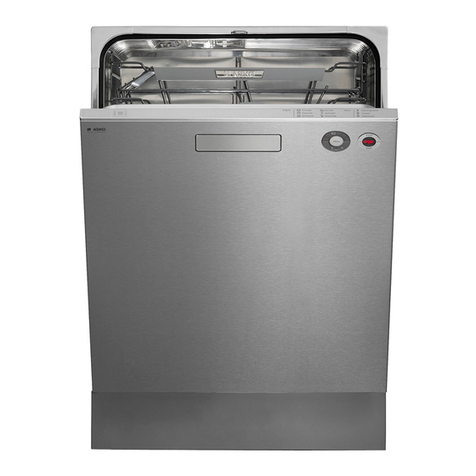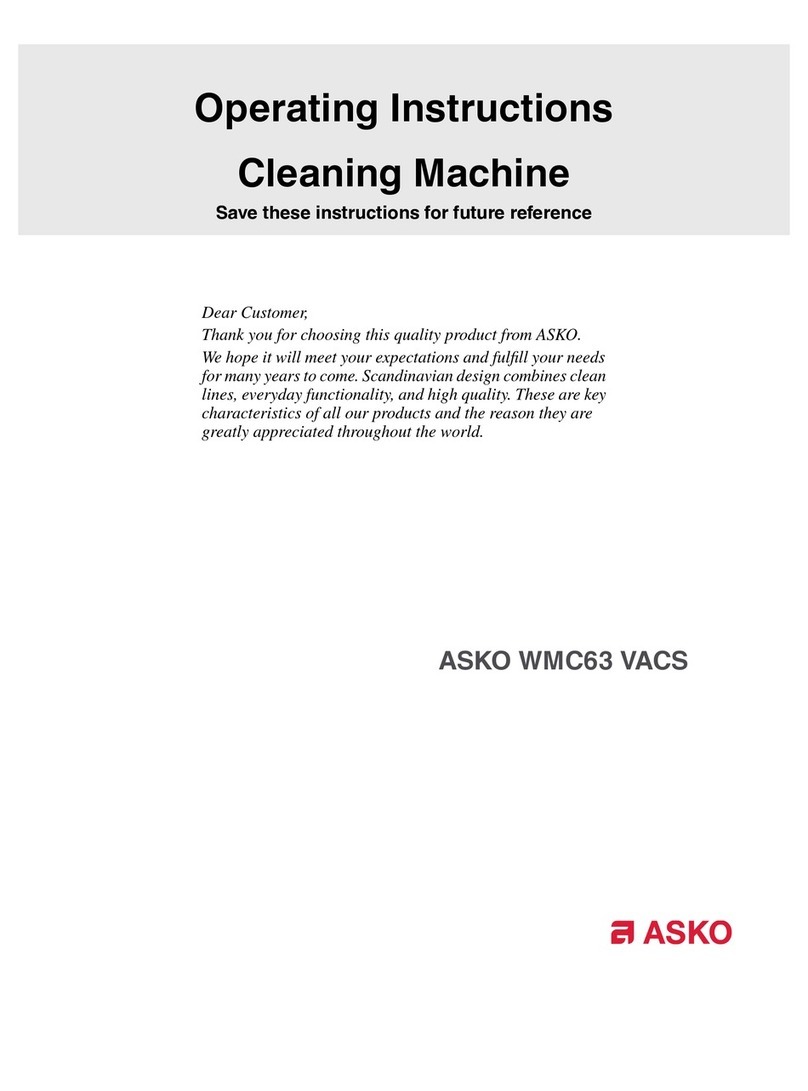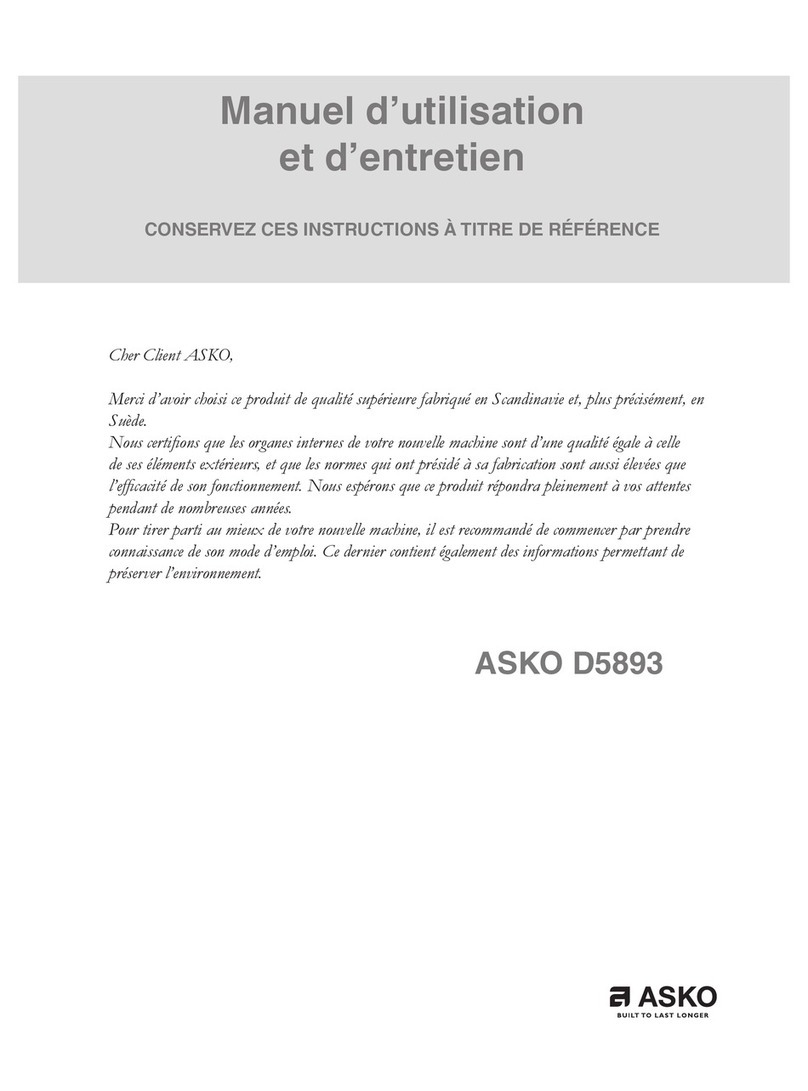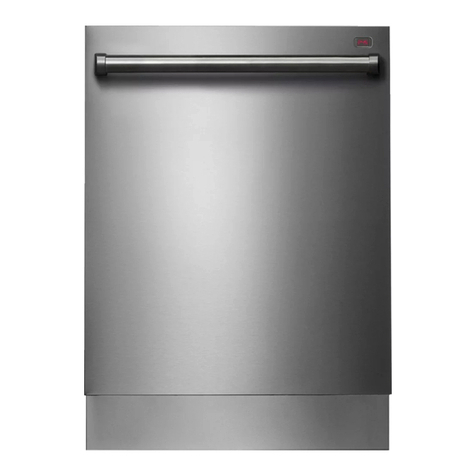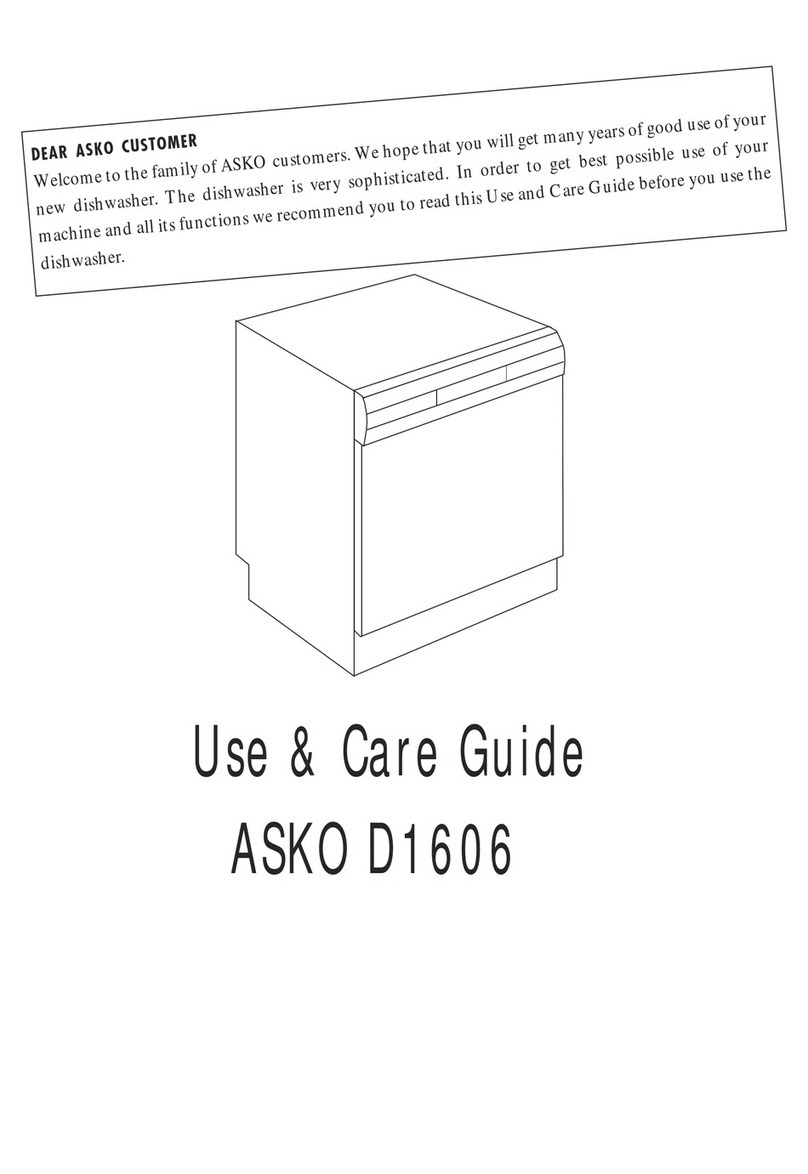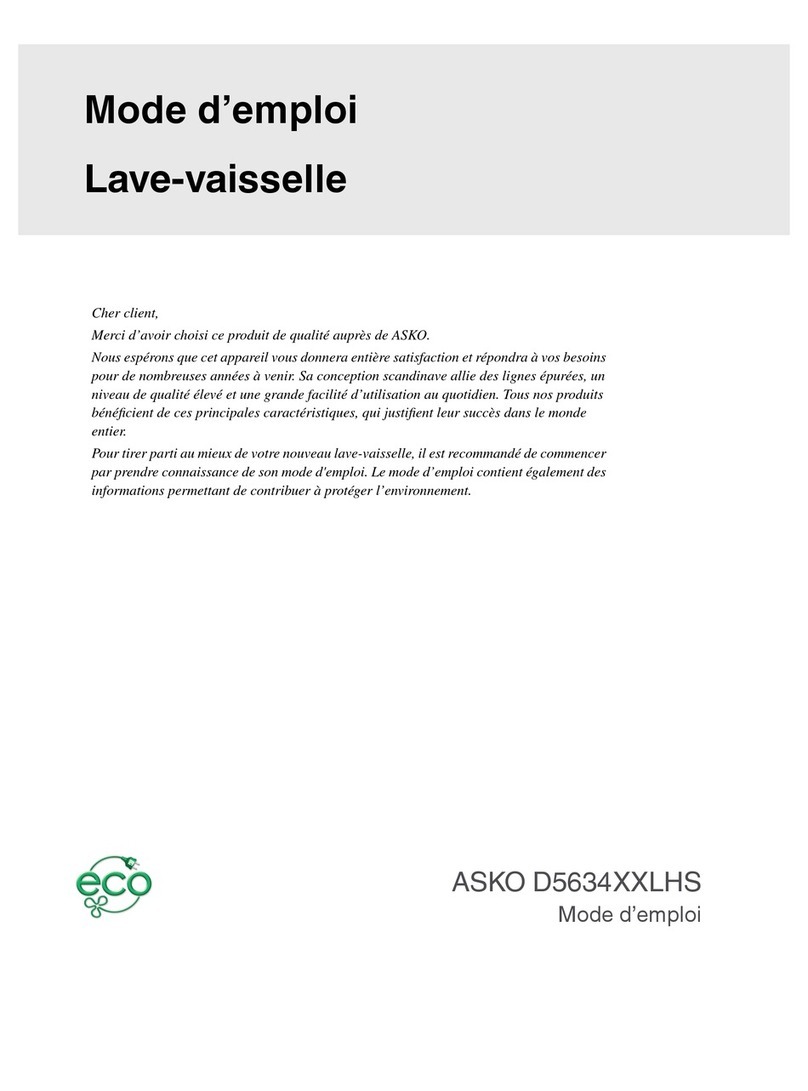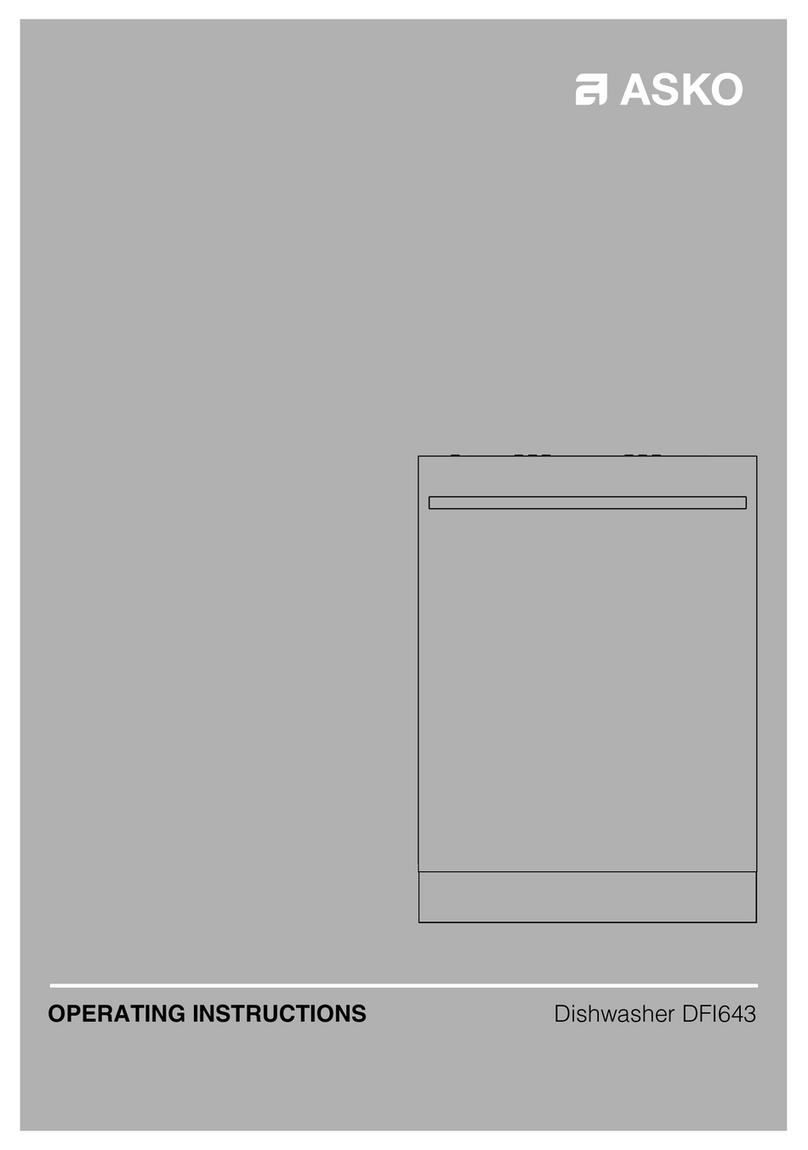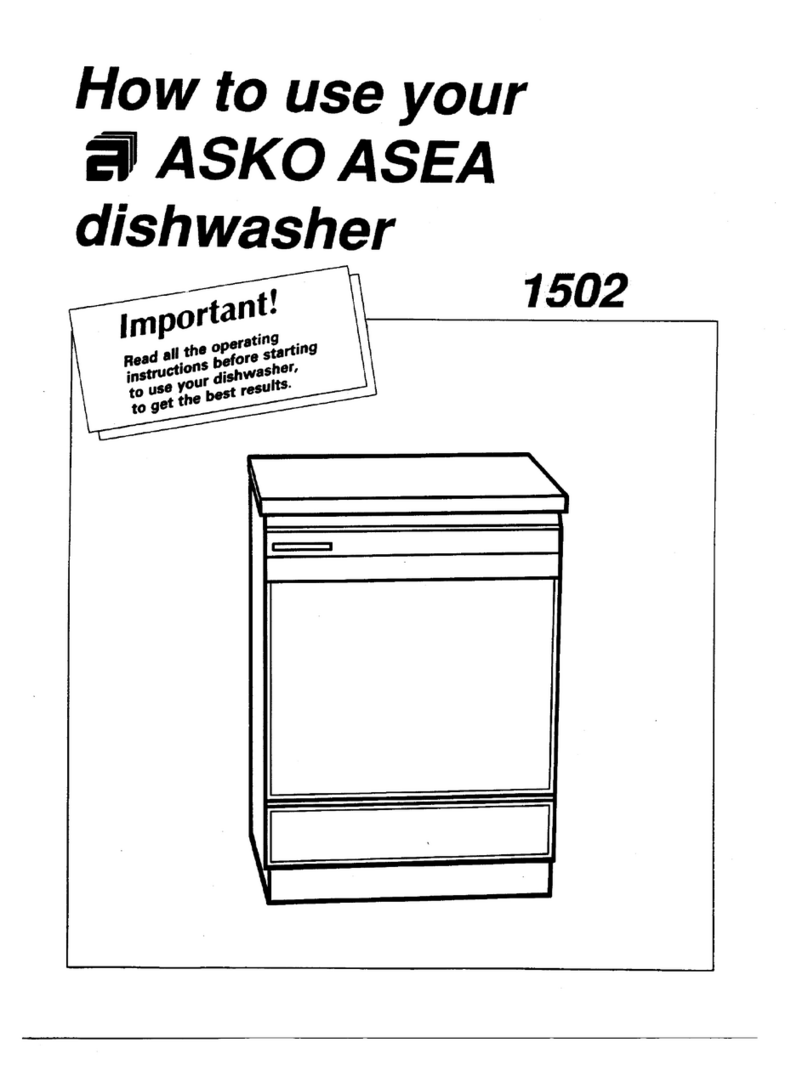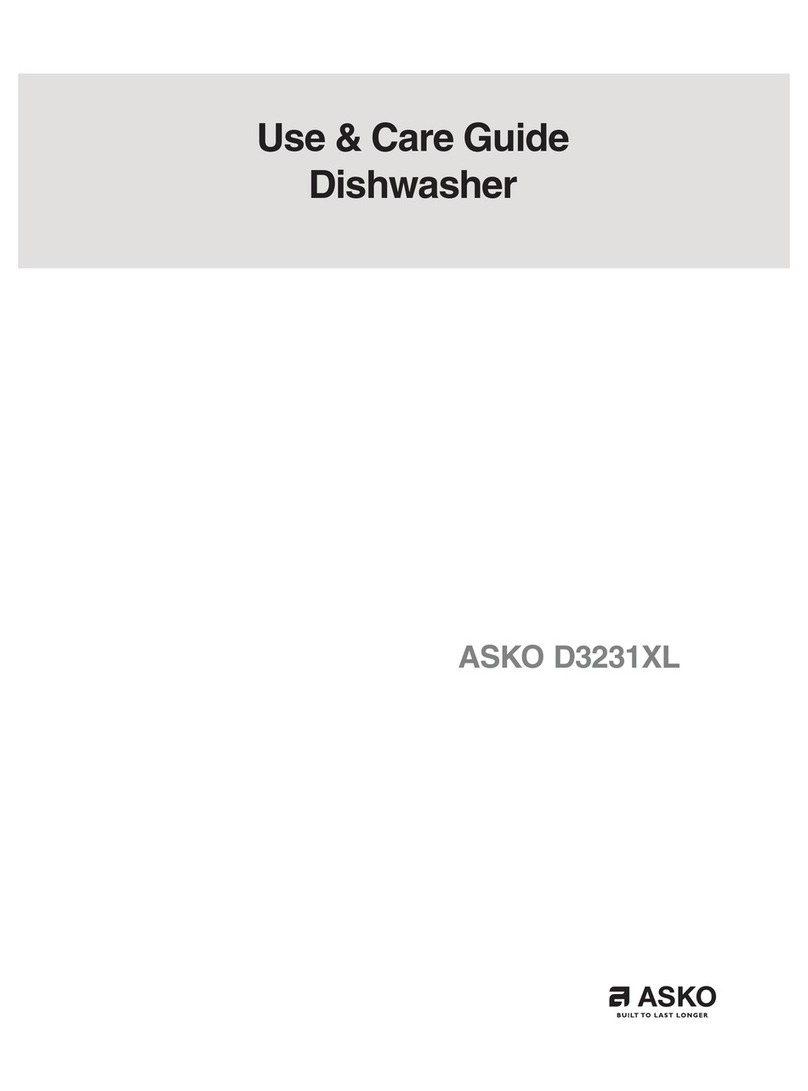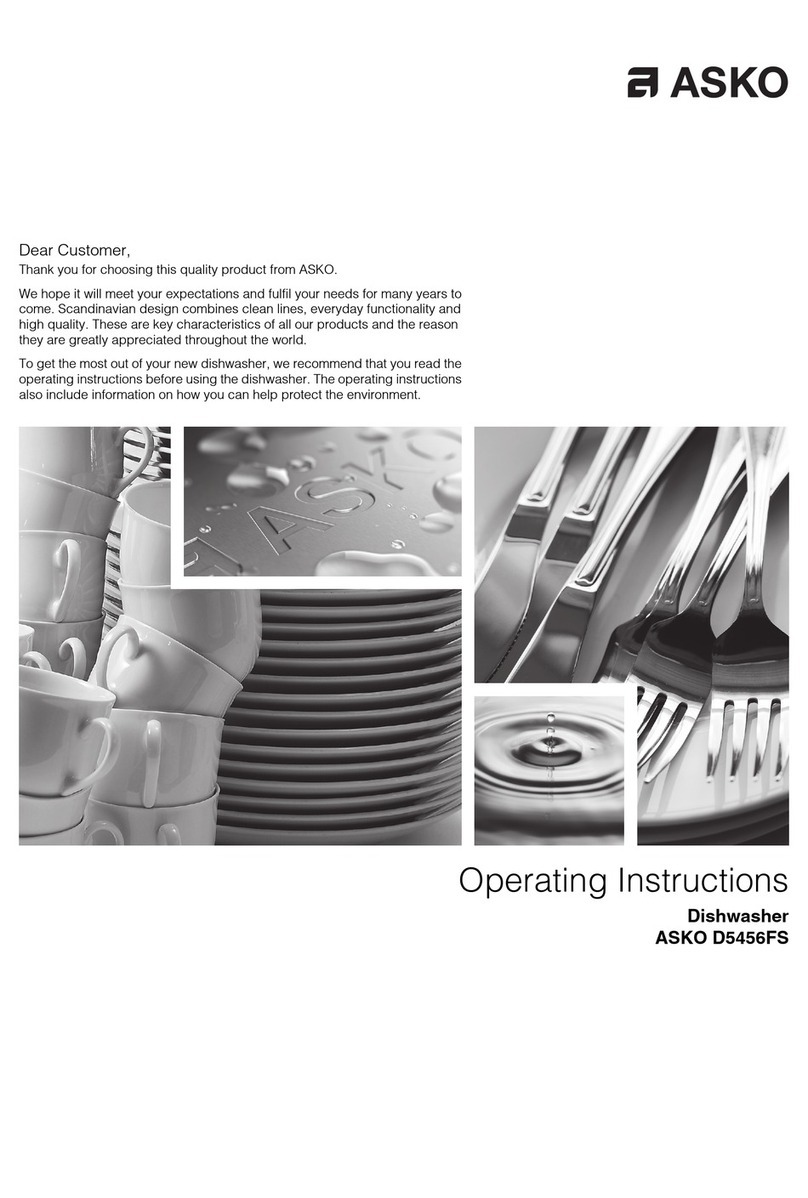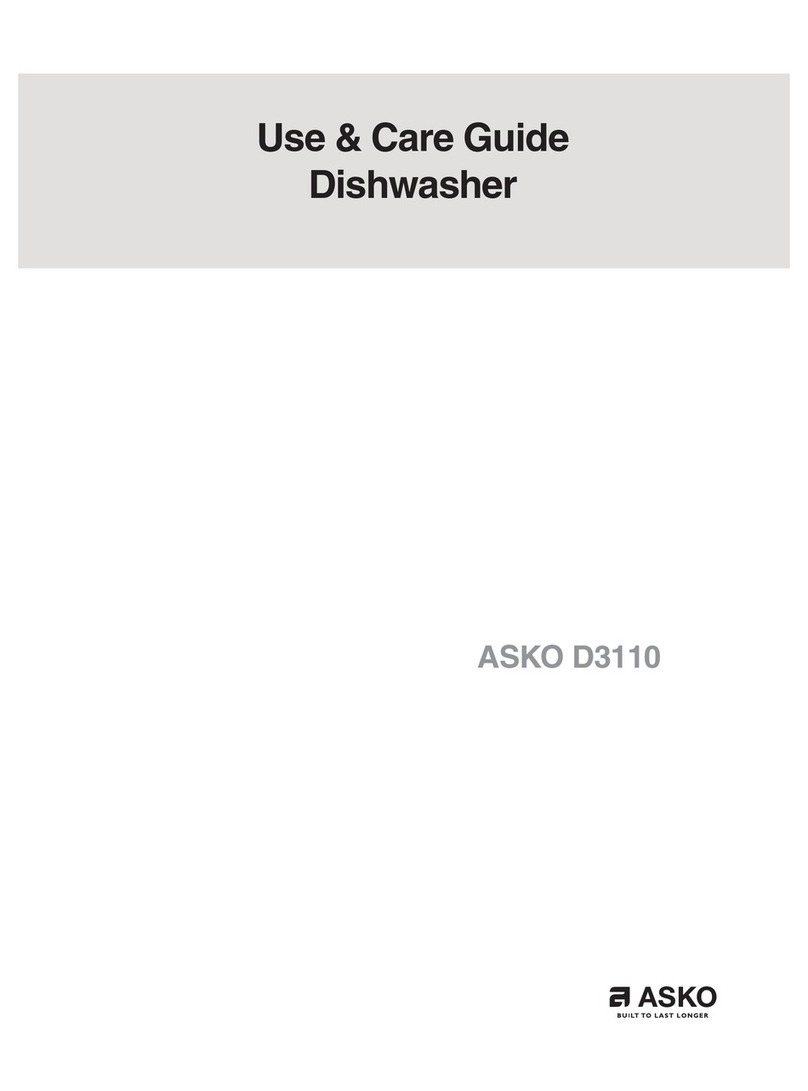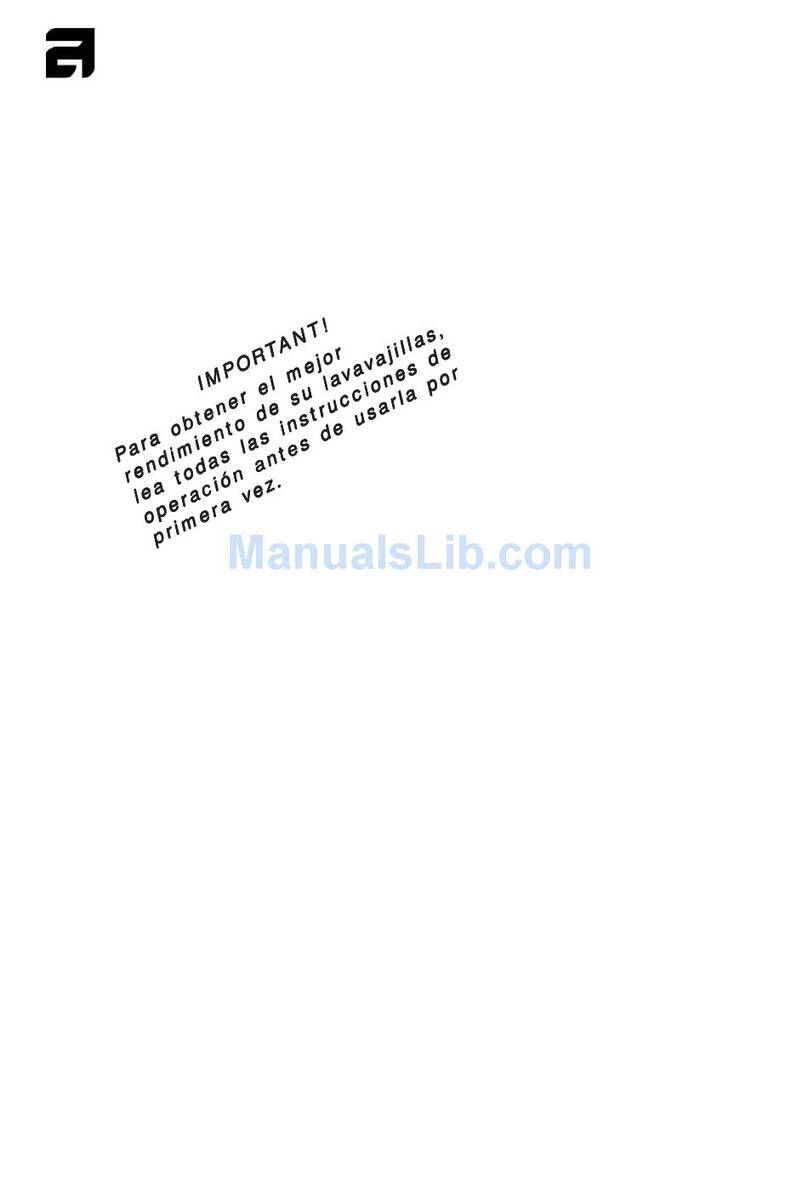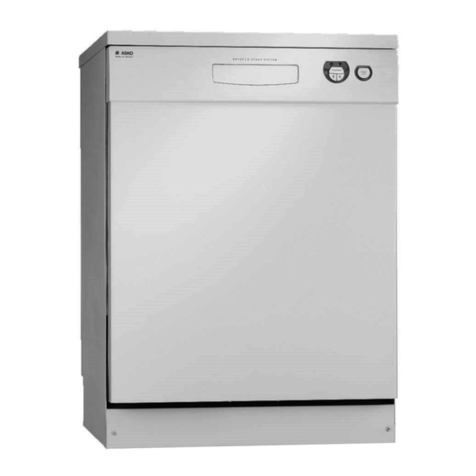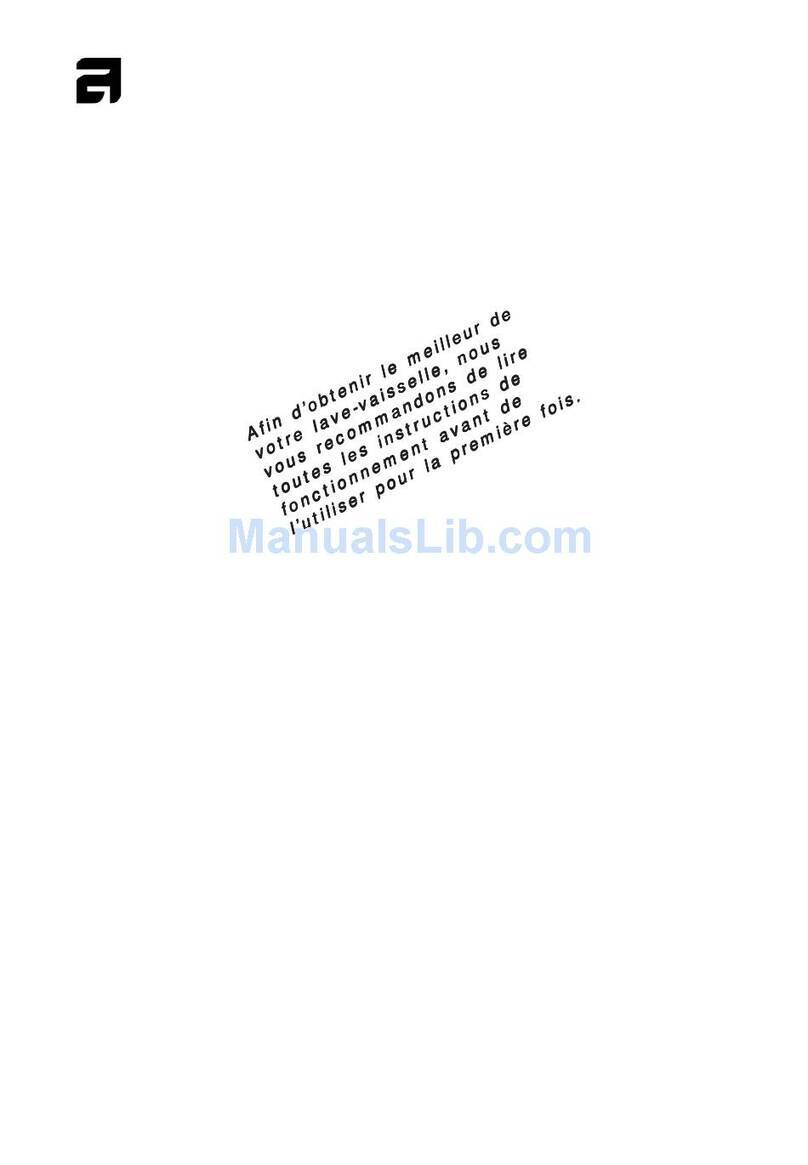
Page 2
The child safety lock is located to the left of the door
handle. To activate the lock, use a screwdriver to turn
the screw slot to a horizontal position. Reset it by turning
the slot to its vertical position.
ENGAENGAGINGGING THE CHILD SAFETY LOCKTHE CHILD SAFETY LOCK
(NO(NOT ON MODELS D1976FIT ON MODELS D1976FI AND D1996)AND D1996)
♦Dishwasher detergents and rinse aids are corrosive,
so always keep the out of reach of children.
♦Should a child swallow dishwasher detergent or
rinse aid, give plenty to drink i ediately, i.e., one
or two glasses of ilk or water. Do not try to induce
vo iting. Seek edical advice i ediately: 1-800-
POISON1
♦Always close the door and start the dishwasher as
soon as you put in the detergent.
♦Always keep s all children away fro the achine
when it is open. There ay be so e detergent
residue left inside the achine.
CHILD SAFETY TIPSCHILD SAFETY TIPS
♦If dishwasher detergent gets in so eone’s eyes,
rinse the with plenty of water for at least 15 inutes.
♦Do not allow children to use or play in or on the
dishwasher.
♦Load all long and sharp ite s in the knife/utensil
basket. If this is not possible, load sharp objects
with the pointed end facing the back of the
dishwasher. Sharp ite s loaded in the silverware
basket should be loaded with pointed ends down.
♦Engage the child safety lock. (See below.)
BEFORE USINGBEFORE USING YYOUR NEW DISHWOUR NEW DISHWASHERASHER
♦Read through this guide before atte pting to use
your new dishwasher.
♦Read the “Washing Special Ite s” section before
washing any porcelain or china that has “on-glaze”
decoration, crystal glassware, or ite s of wood or
plastic.
♦Make sure the door is properly balanced. To do this,
open it a little and release it. It should stay where you
released it. If it doesn’t, consult the Installation
Instructions or contact your installer.
♦Call your local water co pany to learn the water
hardness in your area. You’ll need to know this to
deter ine how uch detergent and rinse aid to use.
To open the door when the
safety lock is engaged, you
ust slide the lever to the left
of the door latch toward the
left and hold it as you lift the
latch. (See illustration.)
This anual does not cover all possible conditions and
situations that ay occur. So e situations ay arise
where use of co on sense and caution should always
be used when installing, operating, and aintaining
any appliance.
♦Read all instructions before using the dishwasher.
♦Dishwashers ust be electrically grounded. Read
the Installation Instructions for details.
♦Use the dishwasher only for its intended purpose.
♦Do not run the dishwasher while you are out of the
ho e.
♦Use only auto atic dishwasher detergents and
rinse agents.
♦To reduce the risk of injury, keep detergents and
rinse aids out of the reach of children.
♦Do not load sharp ite s near the door; you could
da age the door seal.
♦Place sharp knives in the silverware basket with the
sharp ends down to avoid the risk of cut-type injuries.
♦Do not wash plastic ite s unless they are arked
“dishwasher safe” or the equivalent. For ite s not
arked, check the anufacturer’s reco endations.
Ite s not dishwasher safe could beco e defor ed
or elt and create a potential fire hazard.
♦Do not touch the heating ele ent during or
i ediately after use.
IMPORIMPORTTANT SAFETY INSTRANT SAFETY INSTRUCTIONSUCTIONS
♦Do not operate the dishwasher unless all enclosure
panels are properly in place (i.e., guard plate, access
panel, toe kick, etc.)
♦Do not ta per with controls by re oving or changing.
♦Do not abuse, sit on, or stand on the dishwasher
door or baskets .
♦To reduce the risk of injury, do not allow children to
play in or on a dishwasher.
♦Under certain conditions, hydrogen gas ay be
produced in a hot water syste that has not been
used for two weeks or ore. HYDROGEN GAS IS
EXPLOSIVE. If the hot water syste has not been
used for two weeks, before using the dishwasher
turn on all hot water faucets and let the water flow
fro each for several inutes. This will release any
accu ulated hydrogen gas. As the gas is
fla able, do not s oke or use an open fla e
during this ti e.
♦When re oving an old dishwasher fro service or
discarding it, re ove the door to the washing
co part ent.
♦Do not store or use co bustible aterials, gasoline,
or other fla able vapors and liquids in the vicinity
of this or any other appliance.
♦Disconnect electrical power to dishwasher before
servicing.
♦Repairs should be done by a qualified technician.
